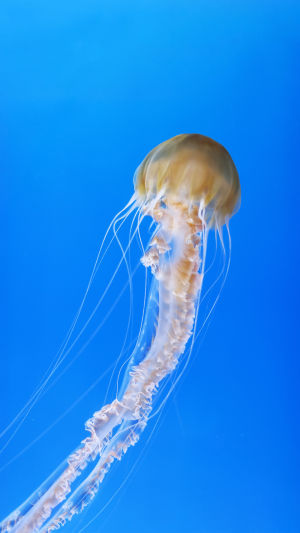According to archaeological findings, jellyfish have existed on Earth for more than 650 million years.
With a long history, jellyfish are known as water fairies for their ethereal appearance and beautiful colors.
However, jellyfish, like octopuses, are notoriously difficult to keep. Nevertheless, many people have started to raise jellyfish, but they always end up failing.
So how should jellyfish be raised?
What do we need to pay attention to in the process of raising jellyfish?
Jellyfish need good water quality, suitable water temperature, suitable light, and food.
1. Water quality
Jellyfish are mostly seawater jellyfish, while freshwater jellyfish are less common, and freshwater jellyfish are protected animals, so we can only keep seawater jellyfish.
Therefore, we need to prepare seawater.
If you can't find seawater, you can use tap water and put some sea salt to mix it by yourself, the mixing ratio is 3:1.
We need to establish the ecosystem in the seawater, and we need to install a filter in the aquarium to ensure the water quality is clean.
It is important to note that when circulating and filtering the water in the aquarium, the water flow rate must be controlled and not too fast.
Too fast a flow of water may produce bubbles that are harmful to jellyfish.
Jellyfish are very responsive to stimuli from the outside world, and too fast a flow of water can cause an overreaction in the jellyfish, which is detrimental to its growth.
If the seawater is left for a long time, it will produce nitrite, which is very harmful to jellyfish.
You can put nitrifying bacteria in the seawater to promote the decomposition of nitrite.
2. Water temperature
Jellyfish are very delicate aquatic organisms, and their requirements for water temperature are very high.
The maximum temperature should not exceed 30℃ and the minimum temperature should not be lower than 15℃, which are two critical values for jellyfish on the verge of death.
The best temperature for jellyfish is 25°C. At this temperature, the jellyfish's body functions and health will be optimal.
Above or below 25℃, it will be obvious that the jellyfish's vitality is reduced.
3. Light
Jellyfish do not exist alone, they contain symbiotic single-celled algae.
We must provide enough light in the aquarium so that the single-celled algae can carry out photosynthesis.
4. Food
Jellyfish in nature survive by feeding on plankton in seawater.
The bait we feed jellyfish is mainly brine worms, rotifers, planktonic shrimp, and other sea plankton.
The jellyfish is a coelenterate, so its digestive system is very simple.
It only needs to catch the food and digest it directly into the coelom.
The jellyfish's long tentacles and umbrella wings are all digesters. When feeding the jellyfish, the jellyfish will swim around in the water and catch food such as shrimp under its tentacles and umbrella wings for digestion.
These are some of the basic things to keep in mind when feeding jellyfish.
Have you ever considered keeping this special creature?





